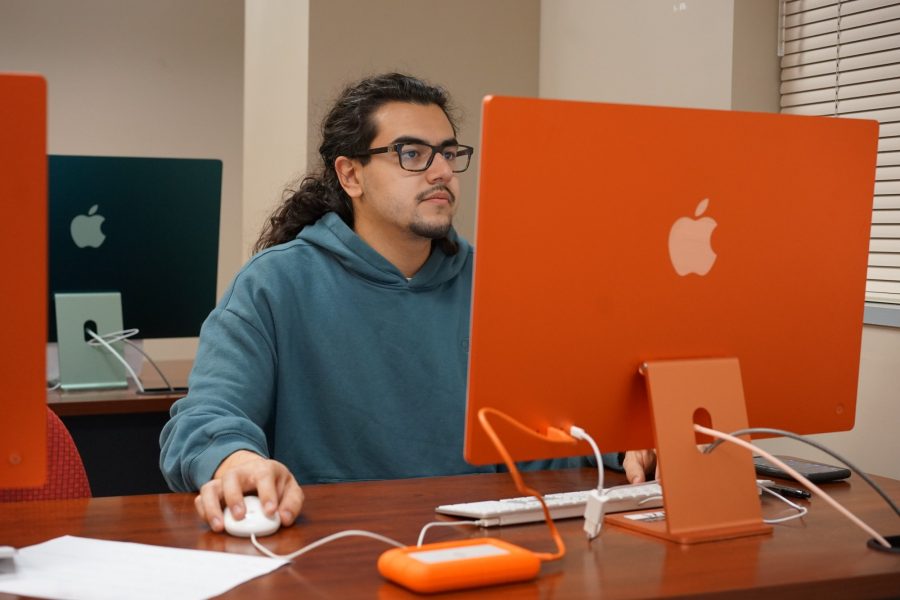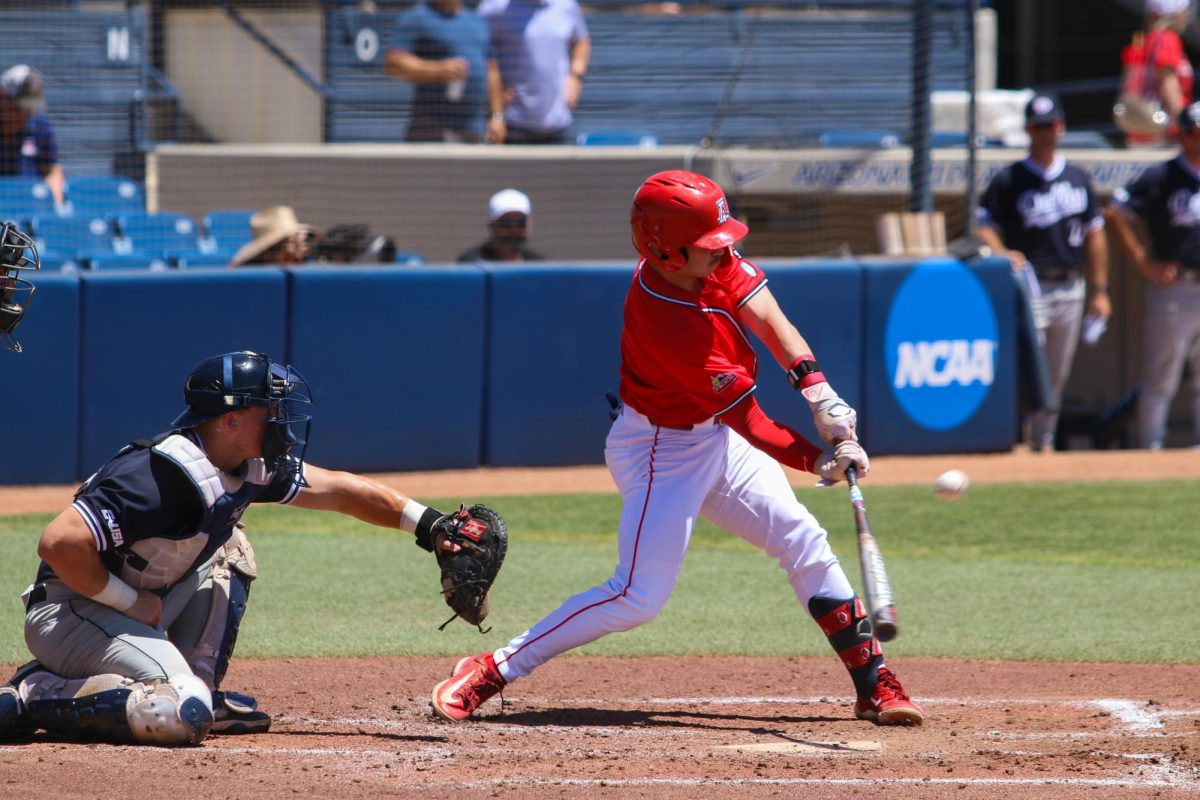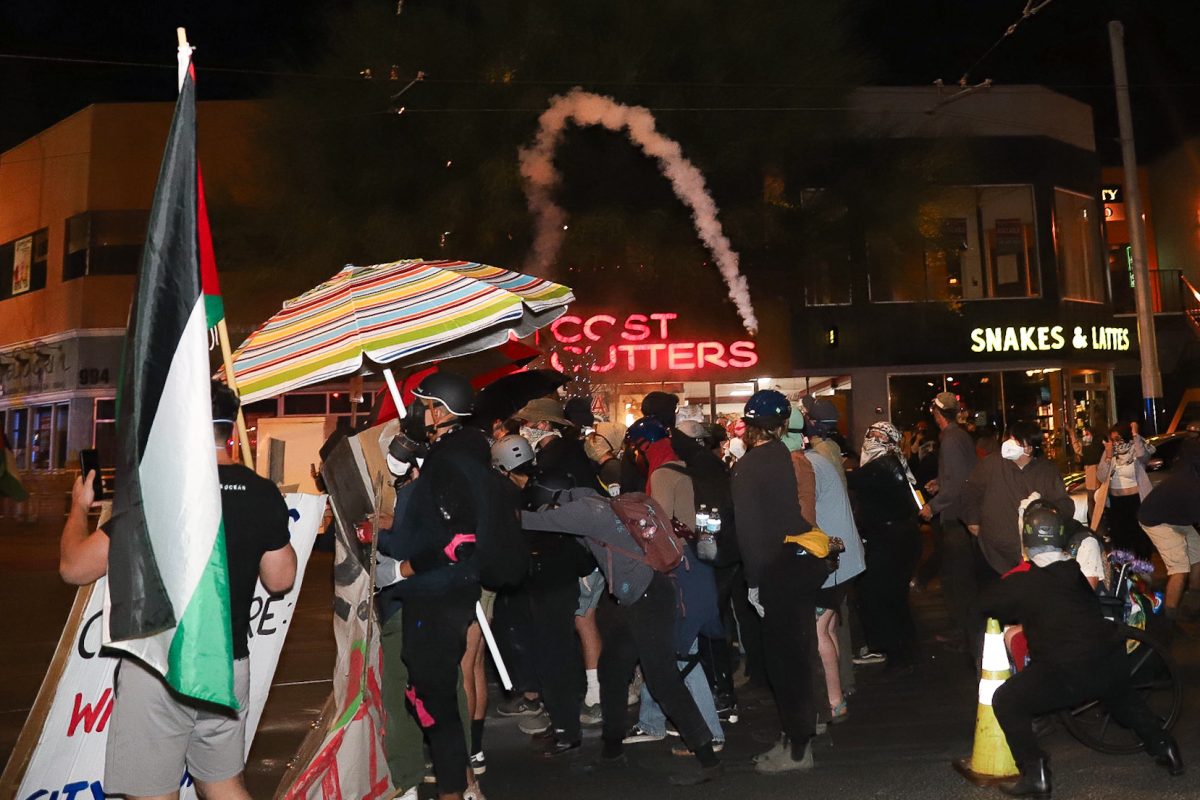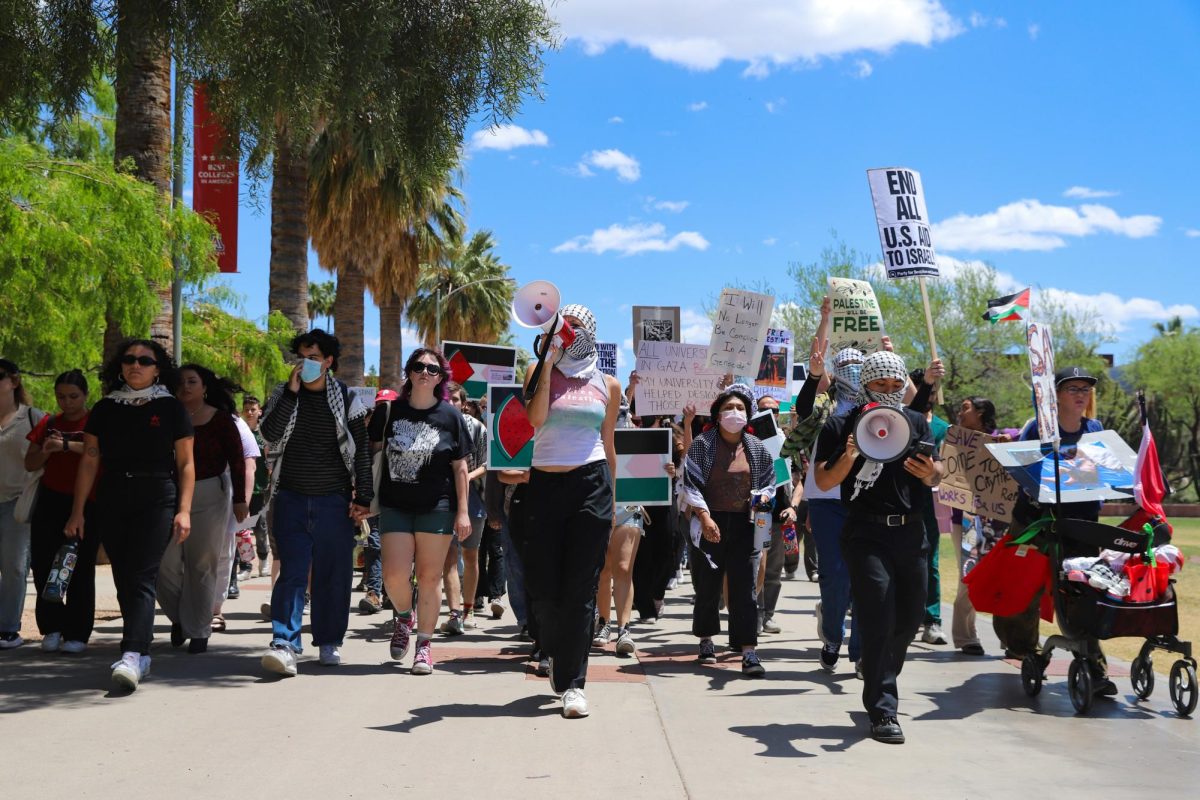University of Arizona students now have a bigger playground to create multimedia content.
The UA launched a new production studio on campus called the Digital Futures Bilingual Studio, at 811 N. Euclid Ave., a space that used to serve as the UA’s Visitor Center. The studio is open to students who want to grow their skills in video and audio production, offering a variety of equipment, green screen video and podcast rooms.
“Other students can get an opportunity to show their initiative and their creativity,” said Jordan Chin, a senior journalism student who works at the Digital Futures Bilingual Studio. Students have the flexibility to do what they want, for their own learning and future career.
“A lot of the students … you know, they’re fed some assignments, but it’s really like ‘hey, what do you have for us? What do you want to do?’”
In this hands-on lab, students get professional journalism training and produce multimedia projects for the UA, the different departments within the institution, Spanish language TV and the PBS Newshour through the PBS supported Student Reporting Labs.
There are currently two paid positions for student interns, which were created by the university’s Marketing and Communications department. However, there are also non-paid opportunities for students to come and learn, access the facilities and equipment, and develop themselves behind and in front of the camera or microphone.
Chin first met Nancy Montoya, founder and director of Digital Futures, in 2019 while he was interning at Arizona Public Media and she was working as a reporter covering the border. However, it wasn’t until the end of 2021 that he got a position at the studio. Chin said he had been looking for a new job and saw a flyer for the internship, which led him to an interview with Montoya. He has been working as their production assistant for about a year.
“Aside from trying to set up a studio from the ground up, I shoot a lot, I do a lot of shooting for interviews and different stories, I edit, I just recently started producing stories,” Chin said. He has taken on different tasks, not only because it is a big studio with a small group of people running it, but because he wanted to learn about the entire process of a production.
Although the studio initially started with two paid internship positions, Montoya opened it up last summer for students to apply as a for-credit internship. They now have a total of six interns, two in paid positions and four in for-credit internships, which Chin said has been helpful to distribute some of the workload as well as a learning opportunity for him as he provides mentorship.
“The rest of my time at Digital Futures, I will continue to grow as a producer — I am doing that a lot recently, and I really enjoy it — and if I can keep doing that, I can learn how to work within a team better, to try to help reporters get stories out there and kind of help them grow … and through their growth is how I think that I am growing,” Chin said.
Other studios on campus are usually limited to students majoring in a specific department, such as the School of Journalism’s new studio opening in January, or the School of Theater, Film & Television studio.
The Digital Learning Studio in the UA’s Integrated Learning Center allows students to learn Adobe Creative Cloud, VoiceThread, PlayPosit, Examity, Credly and other tools. CATalyst Studios, at the UA’s Main Library, offers a variety of equipment, such as laser cutters, 3D printers, CnC machines, a crafting cabinet, a data visualization wall, electronics prototyping cabinet, laptops and USB-C docks, sewing machines, vinyl cutters, VR (virtual reality) equipment, microphones and podcasting equipment. It also hosts the maker studio, the VR studio, the data studio and the media recording studio.
However, the Digital Futures Bilingual Studios is the first of its kind at the UA.
“As far as being a full-service studio — I think — this is the only one on campus,” Montoya said.
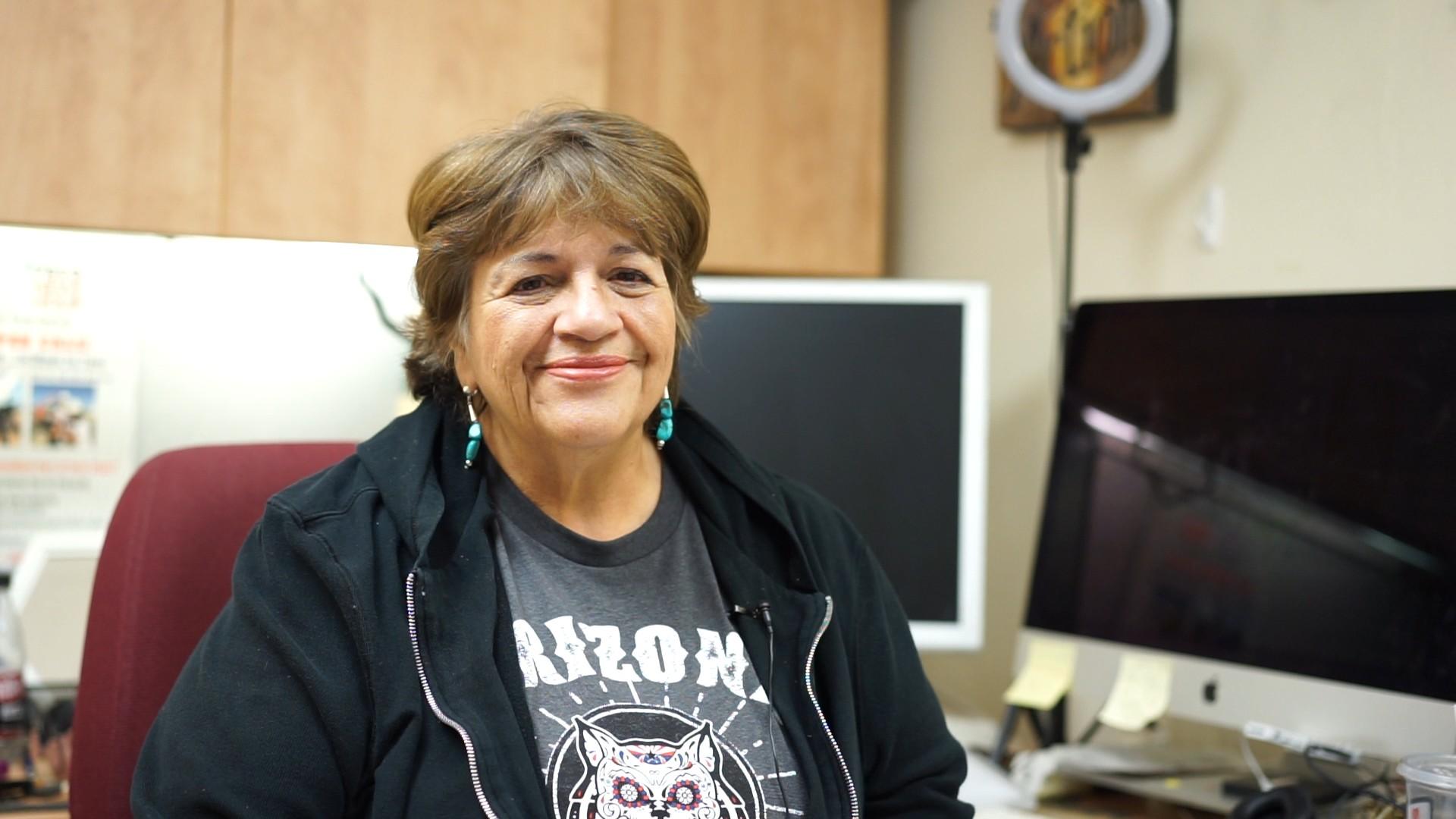
The idea for Digital Futures started in 2019. In hopes to leave a legacy of strong journalism teachings and share her career wisdom with young students, Montoya took the initiative and built this studio from the ground up. Montoya found out KVOA, channel 4, was working on a new digital studio, so she convinced their general manager to donate all of their extra equipment.
“It’s a dream I’ve had for the past 20 years,” Montoya said. “Ever since I started thinking about retiring, I kept saying to myself: ‘I have so much knowledge’ and ‘What I am going to do when I retire, and I can’t leave anything behind?’”
Once she helped the University of Arizona acquire the equipment, Montoya looked for a place to store the hundreds of thousands of dollars’ worth of broadcast equipment and TV anchor sets. According to Pam Scott, associate vice president for external communications, it wasn’t until the coronavirus pandemic that the studio found a home.
“As [COVID-19] hit and we realized that people were not going to be using the visitor’s center in the same way they had been … we realized that would be a great place to set up the equipment, start a training program for students and help faculty and staff get their messages out in a multimedia setting,” Scott said.
The studio has been open for about a year and a half, but its growth has been gradual because it does not have a secured, permanent budget. Montoya asked colleagues in the industry for support and, at times, even used her own money to acquire some of the missing pieces.
“I have a lot of friends in the industry who are retired photographers, engineers, editors, and I call on my friends to come help me out,” Montoya said. “So far, I’ve been very lucky. We’ve had a lot of support.”
Montoya and her husband put the first $5,000 down to open it and launch the studio.
“We’re looking for grants, we’re looking for donors, we’re looking for angels who just have a lot of money and don’t know what to do with it. They can give it to me, and I’ll spend it,” Montoya said.
Scott said future funding will depend on studio usage and donations.
“The ultimate goal is to have students with jobs coming right out of school,” Scott said. “There is a lot of demand for multimedia journalism, and this is a great pathway to those newsrooms across the country and even internationally.”
Follow the Daily Wildcat on Twitter



